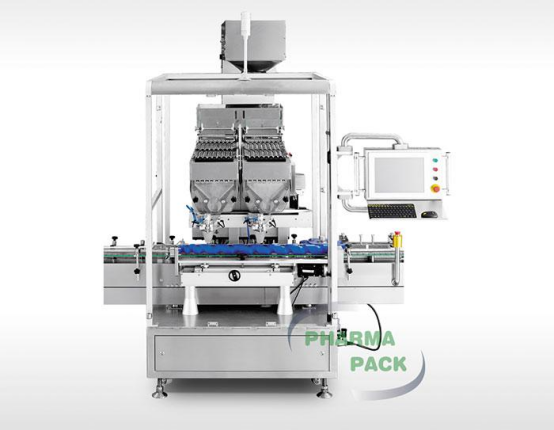당사와 선정된 제3자는 기술적인 목적으로, 그리고 귀하의 동의 하에 쿠키 정책에 명시된 다른 목적으로 쿠키.
또는 유사한 기술을 사용합니다.귀하는 본 고지문을 닫거나, 본 고지문 외부의 링크나 버튼을 사용하거나, 다른 방식으로 계속 탐색함으로써 해당 기술의 사용에 동의할 수 있습니다.


In today's manufacturing world, efficiency is critical to staying ahead of the competition. For businesses looking to streamline their production process and increase output without sacrificing quality, tablet bottle-filling machines are becoming an increasingly popular choice. These innovative machines offer a range of benefits that can help manufacturers stay competitive in a crowded marketplace. In this blog post, we'll explore some of the top reasons why choosing a tablet bottle-filling machine could be the most brilliant move for your business. From increased accuracy and productivity to greater flexibility in serving options, discover how these state-of-the-art machines can take your operations to the next level!

Benefits of Tablet Bottle Filling Machines
When filling your tablets, a few machines offer significant benefits over hand-filling. Tablet Bottle Filling Machines take the hassle and time out of tablet filling, making it simpler and faster for you to get your products to market. Here are just a few of the top reasons to choose one:
1. Increased Efficiency - Tablet Bottle Filling Machines help increase efficiency by automating filling your tablets with capsules. This means less time spent manually filling each tablet, which can free up valuable time for other tasks.
2. Reduced Waste - Tablet Bottle Filling Machines minimize waste by filling all capsules with medication. This eliminates the need to discard unused pills or fill them again later.
3. Increased Product Quality - Tablet Bottle Filling Machines ensure consistent product quality by homogenizing the mixture of pills and liquid inside each capsule. This ensures that each tablet is filled correctly and contains the correct medication dosage.
4. Improved Continuity of Supply - Tablet Bottle Filling Machines provide an uninterrupted supply of medications by automatically refilling empty capsules with new powder or liquid contents as they run out. This helps keep your patients supplied with their required medication while reducing waste and costs associated with sourcing new supplies on an ad-hoc basis.
How to Choose the Right Tablet Bottle-Filling Machine
Deciding which tablet bottle-filling machine is suitable for your business can be difficult. There is a range of features and prices to consider, so it can be tricky to know where to start. Here are some key factors to keep in mind when choosing a machine:
1. Tablet Bottle Filling Capacity
The first thing you need to decide is the bottle capacity that the machine will fill. Most devices have a range of bottle sizes that they can supply, from small pill bottles up to giant gallon jugs. Make sure you have enough bottle capacity for your needs.
2. Tablet Bottle Filling Speed
Another critical factor is the speed of the filling process. Some machines are faster than others, so you may want to consider how quickly you need your product filled. If you have a high-volume business, you may want to invest in a faster machine that can handle more bottles per minute.
3. Tablet Bottle Filling Accuracy
The machine must fill your bottles accurately - if the pills or liquids aren't put into the bottle altogether level, they'll come out unevenly during assembly and storage. Many machines have features that ensure accuracy, such as adjustable levels and sensors that detect when objects are inserted into the filler port correctly.
Conclusion
Pharmapack Technologies Corporation was founded in Guangzhou in 2002. Our company specializes in packaging and coding equipment R&D, manufacturing, sales, and service. We also strive to be a packaging machine industry leader by providing cost-effective equipment and integration for the pharmaceutical, food, and healthcare industries. We offer digital packaging solutions to you. We always provide the best pharmaceutical packaging machinery. Smart bottle packaging and flexible packaging lines are among our offerings. We also have intelligent detection packaging lines, intelligent secondary packaging lines, and coding systems.